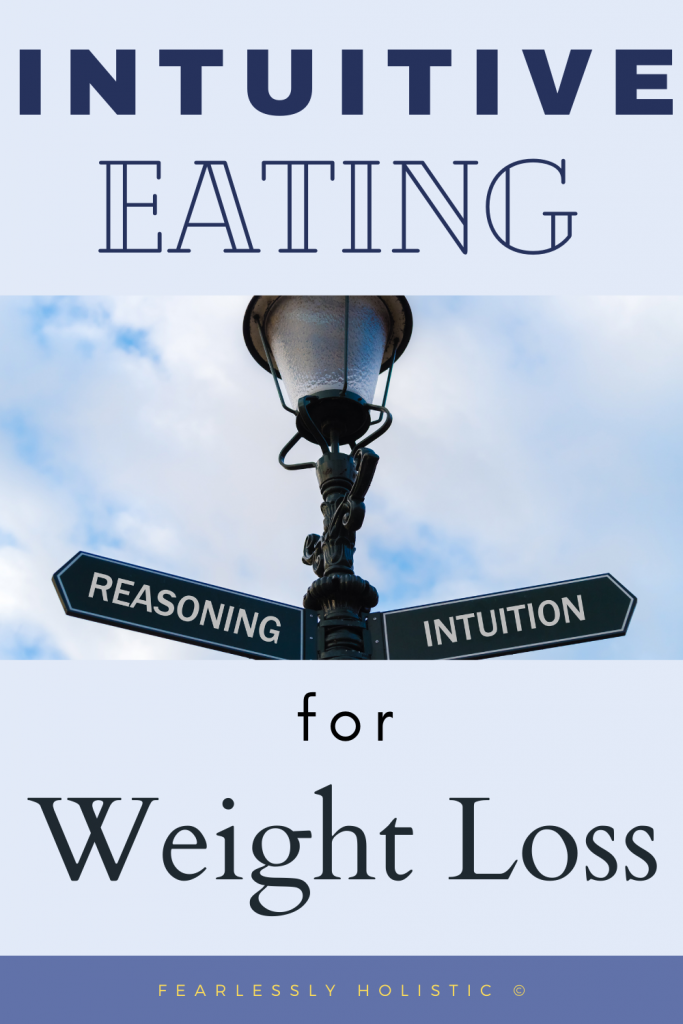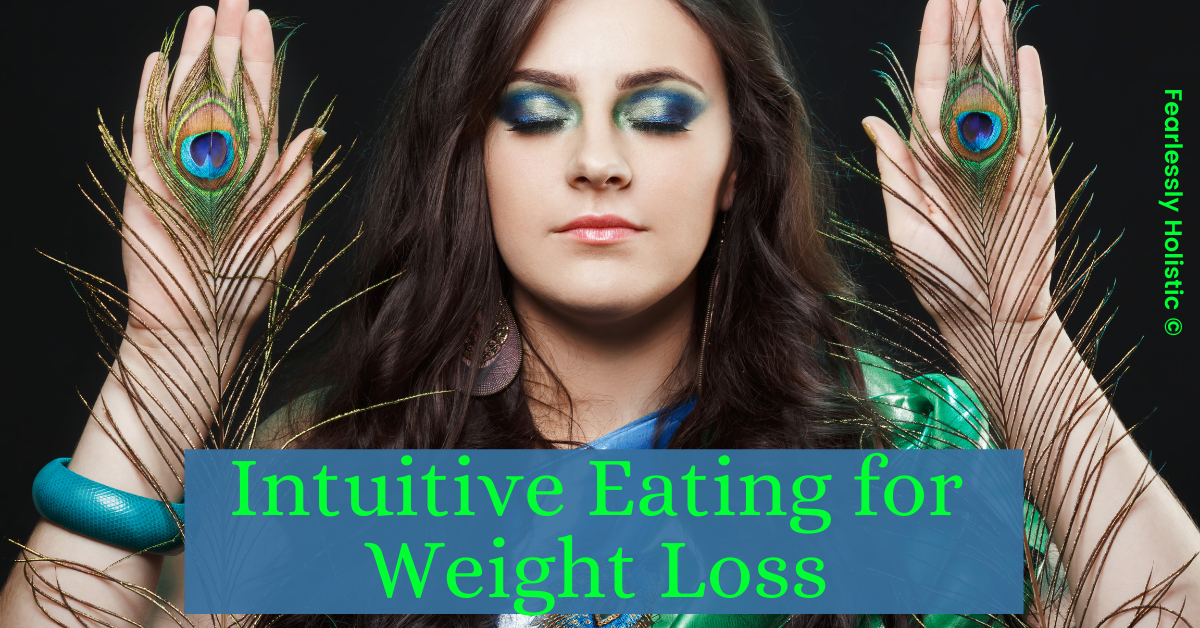What is intuitive eating and how does it help with weight loss?
How many times have you thought or said, “I wish someone would just tell me what to eat so I could be healthy and lose weight??”. Well today we will look at this very situation.
Hello and welcome to Fearlessly Holistic.
My name is Irma and I want to share my journey to improved health by eating whole foods, moving my body and eliminating stress as much as possible.
It is my hope to inspire you to make daily changes. Why? Because eating fresh, seasonal food and getting some sunshine is the best way to increase longevity. But you do not want just a long life. You want a quality long life.
My blog posts are my opinion and the results of things that I have tried that either worked for me or didn’t. My opinions are for informational purposes only and are not intended as medical advice. Medical advice should always be obtained from a qualified medical professional for any health conditions or symptoms associated with them. As well, there may be affiliate links in this post. Read more here.
Why Does Weight Loss Seem So Difficult?

Most people with weight and health issues have wished for someone to tell them what to eat at least once. It usually happens when you’re sitting in front of the news or reading the paper and once again getting health advice that conflicts with the health advice you heard last week.
For example, one week eggs are bad for you and cause heart disease, and yet the next week they’re a great source of healthy fats and protein.
Which is right?
How do you know if you’re helping or harming your body?
Struggling with losing weight and dieting is the other reason people often wish there was a magic approach to eating, one where someone tells you what to eat – and it’s perfect and easy and you lose the weight you want to lose.
What if there really is someone who can tell you what to eat to lose weight and improve your health?
And what if that person was you?
We’re talking about intuitive eating and it can change not only the way you look at food but also how you live your life.
Does Intuitive Eating Work?
Intuitive eating is putting you and your intuition in the driver’s seat. When it comes to deciding what to eat, you choose.
You are the expert in your life because you know you best.
And the science is there. It backs intuitive eating.
In fact, an article published in Public Health showed that intuitive eating is linked with lower Body Mass Index (BMI) and better psychological health.
The benefits are substantial and they’re backed by story after story of people who have found a new relationship with food and their body.
This relationship and approach leads to:
- Weight loss
- Weight control
- Improved health
- Better sleep
- More energy
- Less stress about food, more happiness
- No more diets!
Sounds pretty good, right?
Intuitive eating is often called mindful eating.
It’s an approach to eating that embraces the concept that:
- When you listen to your body and pay attention to the signs that it sends
- You will then know what to eat
- When to eat
- How much to eat
It’s all about awareness.
Many people eat in an unconscious “auto-pilot” kind of way.

We learned as school children to eat at specific times and in an allotted amount of time.
We also eat by the clock and we eat based on what sounds good right now. We never think about whether we are hungry, only that we have so much time to eat before we run out of break time.
We eat for convenience; we pay almost no attention to the ingredients in the food we eat.
We choose foods based on government guidelines and not on how it impacts our immediate and long-term health.
We’ve also been trained to believe that hunger signals, like a growling tummy, indicate that we must. eat. now.
But what if hunger pangs are not a bad thing?
Intuitive eating embraces a few principles that are quite simple in practice.
Like learning to recognize when you’re full and eliminating overeating.
When I switched over to eating a Ketovore diet, I would often hear my stomach growling before bedtime.
But I knew that I could not possibly be hungry because of when I last ate and how much I had eaten.
So I drank more water and went to bed “hungry” many times. But I was not hungry when I woke up.
That’s how I knew that my ‘hunger” was not serious.
Intuitive eating makes eating healthy easier, especially when combined with a low-carb diet like Keto or Ketovore. When you eat more good fats and protein, and less carbs you naturally fast more often.
Your digestion will improve, you’ll feel healthier and stronger and your mental clarity and function will improve, too.
There are so many subtle benefits to intuitive eating and yet government eating guidelines constantly point us in the opposite direction.

Using Intuitive Eating To Fight Emotional Eating Habits
When you develop intuitive eating habits, you can use them use it to tackle emotional eating.
With intuitive eating, you are learning to listen to your body, including when you are hungry, when you are full, and whether or not you are actually craving food or something else.
This can help you tune in to your own body’s signals, including when you might be craving something more because of your emotions, and less because it is what your body needs in that moment.

1. Emotional Eating as a Response to Restriction
Intuitive eating can first help because emotional eating is often a response to restriction.
If you have a history of dieting, your relationship with food may be severely damaged. This is when emotional eating often becomes worse.
As soon as you have a change in moods or emotions, you want to eat something “off-plan”.
It then frequently turns into more of a binge, which comes with another set of problems.
But when you eat intuitively, you no longer restrict your food, so your emotional eating is much less severe. Sometimes it goes away altogether.
2. Intuitive Eating Helps Put Things in Perspective
When you eat intuitively, you pay a lot more attention to your body’s signals.
This can help you actually see when you are physically hungry, or when you are mentally hungry. This is an important distinction when it comes to figuring out how to stop emotionally eating.
Through intuitive eating, you can better notice when your body wants food, or you are just trying to deal with something difficult, are sad, bored, or anxious.
3. Combining IE and Mindful Eating Strategies
A great method to help curb your emotional eating is with both intuitive eating and mindful eating.
Mindful eating helps you to stay in the moment and fixed on how you feel physically and mentally while you eat. When you use this in intuitive eating, it further helps you to understand your body’s cues when it comes to hunger, food, and cravings.
4. Sometimes It’s Okay to Eat Emotionally
At the end of the day, putting a bad label on emotional eating might be what is making it worse.
When you use intuitive eating to lessen the stress you put on the “right way to eat”, the less you really need to eat for emotions. Then you tend to eat for pleasure and fuel.
Getting Started with Intuitive Eating
Intuitive eating changes lives. It re-frames how you think about food, how you feel, and how you live your life.
Getting started is an exciting time. It can be filled with a bit of anxiety because you’re challenging your beliefs and habits.
Be sure to give yourself grace as you learn and test new concepts.
As with learning anything new, there will be mistakes. Do not look at your mistakes as failure, because they are not.
Instead, look at what you tried and figure out how to make it a success next time.
Also be aware that not every body can eat every kind of food. Many of us have food allergies or are intolerant to some foods.
Just because I tell you to eat tomatoes does not mean that you must eat them. If you don’t like tomatoes or you have health issues from eating DO NOT EAT THEM.
1. Checking In With Your Body

The first and fundamental component of eating intuitively is to eat when you’re hungry and to eat until you’re full. You want to learn to become aware of your body.
What does it want and need and when does it need it?
Start asking questions. Consider checking in with your body on an hourly basis.
Assess hunger.
Ask yourself, am I hungry? Learn to recognize what hunger feels like. It can take some time to get used to this feeling. Most people wait until they’re famished or they just eat by the clock. Start learning your hunger signals. And honor them by eating when you feel them.
Assess fullness.
Ask yourself, “Am I beginning to feel full?” It takes your body a full 20 minutes to send this message. If you gobble down your food, you’re not going to get the signal until long after you’ve finished eating. This means that you may miss the signs. So part of learning to assess fullness is to slow down when you’re eating.
It’s also a balancing act because you want to stop eating before you feel full.
Again, this can take some time to learn.
As you eat your meals over the next week, pause several times during the meal and tune into your body and your digestive system.
- How does it feel?
- Is it full?
- What does “full” feel like?
- And what does almost full feel like?
Assess Cravings.
Start asking yourself why you’re craving a food or avoiding a food.
Awareness is as much mental as it is physical. It’s important to learn your triggers.
We talked about emotional eating earlier. Emotions and your mental state help you make decisions about your food.
When you find yourself craving a snack, ask yourself why you’re craving it.
Don’t judge your reasons for wanting a particular food, just become aware of your reasons.
There’s strength and power in knowing that you want a cookie because you’re stressed. Then you can make an educated decision about that cookie.
As you go through your day and you find yourself thinking about food or craving a particular food, ask yourself why you want it.

2. Stock Your Shelves
Take a trip through your home including your pantry, cupboards, and refrigerator.
Consider removing the items that you want to cut back on. If you think foods might trigger you to binge, throw them away until you’re stronger.
Stock your home with healthy foods that you know you will enjoy eating. Start looking for delicious recipes and fun and tasty foods.
Keep in mind that eating is supposed to be enjoyable so buy plenty of good quality, tasty foods.
3. Find Aternatives to Food
There will be challenges to your intuitive eating process. There will be times when stress, fatigue, and pressure from the outside world will influence your eating choices.
This is okay. It’s a learning process.
The goal is to begin to identify alternatives for these challenges. Remember that alternatives can be anything that works for you.
If you eat unconsciously when you’re stressed, you might find that listening to a song or watching a YouTube video on mindful eating.
My favorite lately is this video from Mel Robbins on how to stop cravings. Check it out:
I’ve been testing Mel’s process and it works for me. When I mindlessly go looking for unhelpful foods, I use the 5 Second Rule to do a pattern interrupt.
It’s important to understand and to fully embrace that intuitive eating is a process. It’s about relaxing a bit and learning to feed your body the way it needs to be fed.
Instead of listening to your negative and limiting thoughts about food and your body, you listen to your body and respect all that it does and will do for you.
Intuitive Eating Steps for Beginners
Government food guidelines are based on selling specific commodities, like wheat, corn, and dairy. Commodities are products that can be traded.
Food guidelines are based first and foremost on keeping commodities moving. Not on improving your health.
While I do believe in keeping farmers working, I do not believe that their income is more important than my overall health.
These steps are based on several different “principles of intuitive eating” books (there are many).
Most of the books contain similar steps.
The most important concept is that our bodies know instinctively what we should eat and when.
1. Respect Your Body
Do you ever think about what your body does for you? It protects you. It moves you from one point to another. It dances and smiles and skips and runs and so much more.
Learning to respect your body and all that it does for you shifts your relationship with it.
Instead of it being something that you dislike, or despise, it becomes a part of you that you’re grateful for and we tend to take great care of things and people that we’re grateful for. Be grateful for your body. You wouldn’t be here without it.
If you practice EFT, here is an awesome video from Brad Yates:
2. Trust Your Intuition
You may have many habits based on when and what you eat. For Intuitive eating, you must learn to trust your intuition.
I gave up eating breakfast years ago, but I didn’t tell anyone. I knew from past experience that food police would try to shame me for my decision.
After all, we’ve been programmed to believe that life will not be as good without breakfast.
Intuitive eating says that you listen to your body.
So if you decide to skip breakfast and your world does not collapse, you’ve successfully tapped into your intuition.
That is one example, but you need to be aware of why you eat when you do.
Then you can assess whether what you do is really true for you or just old programming.
3. Enjoy Your Food.
Food is fuel. It’s also:
- Part of your culture.
- How we celebrate and spend time with friends and family
- A way to connect to one another.
Intuitive eating is about more than being aware of what your body wants and needs. It’s also about appreciating food and enjoying it.
When you are eating with friends and family, enjoy and appreciate food for bringing people together and nourishing them.
4. Recognize the Value of Hunger
There are many signs that your body gives you about the food that you put into it. For example, you might get a headache when you drink wine or you might get bloated when you have dairy.
These signs are valuable because they tell you what you’re eating isn’t agreeing with your unique body and systems.
Hunger is another sign and it’s a valuable one.
How often do you actually wait until you experience hunger before you eat?
And how often do you ignore your hunger until you’re so famished that you eat the closest and most convenient option, which is usually junk food?
Paying attention to your body and becoming aware of the early signs of hunger help you begin to embrace food as the solution rather than the enemy.
5. Recognize Fullness
Have you ever had to unbutton the top button on your pants after eating too much?
We just talked about ignoring hunger signals. When you do this your blood sugar drops dramatically and your body needs fuel to function.
Mindless eating also causes problems.
Learn to recognize fullness so that you can stop eating before you feel gross and bloated.
Balancing signs of fullness with signs of hunger is half the challenge. Master these two skills and intuitive eating will become second nature.

6. Reject the Diet Mentality
The word ‘diet’ used to only describe a specific combination of foods, like Mediterranean diet or liquid diet.
Now when people hear the word diet, they instantly think of weight loss. No wonder everyone has been on a weight loss diet…that’s all there is!
Intuitive eating asks you to forget all about this approach and never ‘diet’ again.
Eat when you’re hungry and stop when you’re full. #easypeasy
Eat to live.
7. Let Go Of Emotional Eating
Our emotions often make eating decisions for us. Unfortunately when you focus on your emotions and let them rule your choices, you’re not paying attention to what your body is telling you.
Learn to be more aware of your emotions and how they impact your behavior. Recognize them for what they are…emotions. Feel them and think about what they are trying to tell you.
Related Post: How To Overcome Emotional Eating
To break the negative pattern of reaching for food when emotional, try Mel Robbins 5 Second Rule to interrupt negative eating patterns.
Understand that we all have habits that we don’t want and that don’t serve us.
It doesn’t make us bad or stupid, and we can change our lives.
8. Ignore Other People’s Opinions
Ugh, how many people do you need in your life telling you what you can and cannot eat?
Eat this. Don’t eat that. They’re bossing us around on TV, in movies, on the internet, at work, and at school.
That’s why we’re so confused about what’s right. Somewhere along the line we gave control of our choices to others.
And it’s not just other people; we also have internal food police as well, also based on these people’s opinions. Sigh.
Start ignoring these voices inside your head and focus on your intuition to guide your choices.
9. Exercise

Exercise should not be a chore. And it should not be a tool to use that allows us to eat crap because “I’ll jog it off later”.
Both of these situations help to create an unhealthy attitude towards a very natural activity.
Your body was designed to move.
It wasn’t meant to sit at a desk all day or on a couch or in a car. It is meant to move.
Walk, jog, roller skate, dance, jump, swim, do whatever you want to do that feels good and makes you smile.
Find ways to move because it’s good and natural for your body. Not to punish yourself for eating a donut.
If you like to walk, do it. Go to a park and walk among nature for your physical and mental health.
10. Value and Respect Your Personal Health
When you shift your mindset about your body and your health, when you stop fighting it and begin to listen to it and work with it, you’ll find a new respect for your health.
Many people find themselves blaming their body and their health.
They feel like a victim and that being healthy is a battle.
When you stop battling with yourself and work to listen to your body, you will find that eating healthy and losing weight becomes easier.
Conclusion
I have so many bad habits related to food that I was stumped for a while on where to start.
I opted for Ketovore because my past history on the Atkins diet (low carb/ketogenic) was positive. I found that eating more good fat, a bit more meat, and less starchy food really improved most areas of my life.
Related Post: Ketovore for Better Health
The high fat meant that I had less brain fog and I didn’t need naps to get through the day.
More protein meant that I had more stamina and little to no food cravings.
This combination solved multiple food issues for me, so I recommend it to everyone.
That being said, I do have food allergies to beef, egg whites, and dairy.
When I overdo it on these foods, I feel gross.
So as you work through your own journey to better health, don’t eat foods that don’t improve your life. That does not mean that you can never eat them.
Just understand what they do to you and be prepared for the consequences.
I eat beef, eggs, and dairy. I try not to eat all 3 on the same day. And I stick to small servings of them. Because I’m in control.
Holistic approaches never just address symptoms of specific health problems, but instead aim to return or keep the patient in a state of balanced health between mind, body, and spirit. Holism targets overall wellness, and when we are well, we only get better with age.
Please share this post with anyone who can benefit from it. Sharing is caring!
And follow me on Pinterest!
Until next time, here’s to our health!
-Irma
